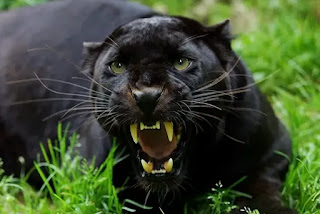The Enigmatic Majesty Of The Black Panther: A Sign of Power And Grace
Introduction:
The Black Panther is also known scientifially as Panthera Pardus. It's a magnificent big cat with a unique place in wildlife. The sleek black coat of the Black Panther, combined with its strength and stealth, has given it a mystique beyond the animal kingdom. This article explores the many facets of black panthers, including its cultural significance and conservation challenges.
The black panther, which is not a separate species, is a melanistic variation of jaguars and leopards. Melanism, a genetic disorder that causes an excess of pigmentation in the dark color, gives the black panther its distinctive hue. The black panther has a dark exterior but its rosette pattern is still visible when inspected closely. It's an amazing blend of beauty and power.
The panther is built to be agile and stealthy. It has a powerful frame, sharp claws and a muscular body. This makes it a formidable animal in its natural environment. Its ability to adapt to different ecosystems, from dense rainforests and open savannas to dense forests, shows its versatility as a top predator.
II. The Cultural Importance of the World:
Black panthers are symbols of many different cultures around the world. In African folklore the panther, revered for his strength, is often associated deities and powerful spirit. In certain Asian cultures, the panther is a sign of protection and courage.
The black panther is also a cultural icon in modern times. This is due to its depiction in film, literature and comics. Marvel's Black Panther has, for example, become a symbol of African empowerment and excellence, reaching a worldwide audience and breaking down cultural barriers. Wakanda is a fictional nation that has been portrayed as being the most technologically sophisticated in the world. This has helped to elevate the panther’s image.
III. Conservation Challenges:
The black panther is a threatened species in the wild. This is primarily because of habitat loss, poaching and conflict with humans. The panther’s habitat has been impacted by deforestation and increased urbanization, which have pushed them closer to human settlements. This proximity increases conflict and the risk of retaliatory murders.
The illegal wildlife trade is a major driver of poaching. This is due to the high demand for skin, bones and other body parts. To ensure the survival of black panthers in the wild, conservation efforts are essential. These include the creation of protected areas, education of communities, and anti-poaching campaigns.
Conclusion:
The mysterious presence of the black panther, in both the wild and cultural narratives continues to capture the imagination. The black panther's symbolism is found in ancient mythology and contemporary superhero stories, which highlights its significance. Despite its power and beauty, we must also address the conservation issues that threaten the black cat's survival. We can protect this majestic creature by raising awareness and ensuring collective effort.


.jpg)



